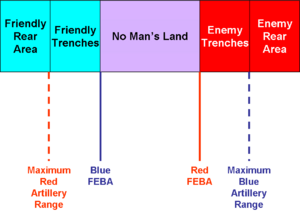Stryder50
Platinum Member
So once you've archived local~regional air superiority, the enemy's fighters are vanished and you can strut your stuff in the wild blue, then what ???
Is not the purpose of air domination to be able to apply the use of air power against targets on the ground to support the efforts of the "ground pounders" in kicking butt, taking names, and secure the turf ???
If not, why not ???
Seems our USAF 'guys in blue' sometimes get a bit full of themselves in winning the air battles and domination game and then forget the real purpose for doing such, the freedom to apply air power to the ground targets and objectives in support of the "grunts" whom can use all the help they can get.
Almost since they got it, seems the USAF has tried to shed the A-10 and the role it represents. The "fighter jock" mindset tends to dominate over all other and real world concerns and needs for having an air force in the first place. Hence what we see in the following post and article link of where the "Blue Brass" think they aught to go versus what the overall military scheme and objectives would need.
Are they willing to surrender part of the "Air Power" role over to more of a part of the US Army and Marines in having their own fixed wing components for Close Air Support~CAS/Ground Air Support~GAS ???
Is not the purpose of air domination to be able to apply the use of air power against targets on the ground to support the efforts of the "ground pounders" in kicking butt, taking names, and secure the turf ???
If not, why not ???
Seems our USAF 'guys in blue' sometimes get a bit full of themselves in winning the air battles and domination game and then forget the real purpose for doing such, the freedom to apply air power to the ground targets and objectives in support of the "grunts" whom can use all the help they can get.
Almost since they got it, seems the USAF has tried to shed the A-10 and the role it represents. The "fighter jock" mindset tends to dominate over all other and real world concerns and needs for having an air force in the first place. Hence what we see in the following post and article link of where the "Blue Brass" think they aught to go versus what the overall military scheme and objectives would need.
Are they willing to surrender part of the "Air Power" role over to more of a part of the US Army and Marines in having their own fixed wing components for Close Air Support~CAS/Ground Air Support~GAS ???





